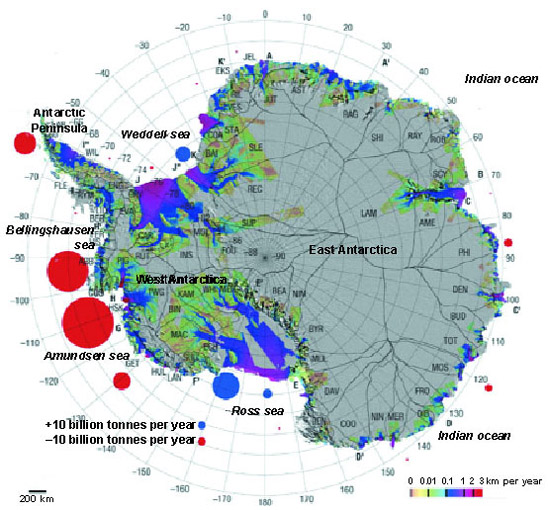UN World Water Development Report 2025
<p>For billions of people, mountain meltwater is essential for drinking water and sanitation, food and energy security, and the integrity of the environment. But today, as the world warms, glaciers are
<p>For billions of people, mountain meltwater is essential for drinking water and sanitation, food and energy security, and the integrity of the environment. But today, as the world warms, glaciers are
Glaciers are the coolers of the planet earth and the lifeline of many of the world's major rivers. The interaction between glaciers and climate represents a particularly sensitive approach. 2006
This refers to the two contrarian views about global warming that are in currency

This report presents a wide-ranging review of arctic climate impact science. It spans the width of subject areas, covering impacts on physical and biological systems, as well as on humanity. The report presents the scientific evidence for arctic climate change impacts in review sections, each of which targets a particular arctic system or cross-cutting arctic theme.
The growing volumes of fresh water held behind dams in the world's artificial reservoirs have had an appreciable mitigating effect on rising sea levels, according to a surprising study published today
A Vast Lake Trapped Under Ice Sheet Drained Into The Sea, Bringing Down Temperatures Paris: Canadian geologists say they can shed light on how a vast lake, trapped under the ice sheet that once smothered much of North America, drained into the sea, an event that cooled Earth's climate for hundreds of years. During the last ice age, the Laurentide Ice Sheet once covered most of Canada and parts of the northern United States with a frozen crust that in some places was three kilometres thick. As the temperature gradually rose some 10,000 years ago, the ice receded, gouging out the hollows that would be called the Great Lakes. Beneath the ice's thinning surface, an extraordinary mass of water built up
British scientists in Antarctica have found evidence of glaciers the size of Texas surging towards the ocean, BBC reported. If the trend continues, they say, it could lead to a significant rise in global sea level. The new evidence comes from a group of glaciers in a remote and seldom visited part of west Antarctica. The "rivers of ice' have surged sharply in speed towards the ocean. David Vaughan, of the British Antarctic Survey, explained: "It has been called the weak underbelly of the west Antarctic ice sheet, and the reason for that is that this is the area where the bed beneath the ice sheet dips down steepest towards the interior. "If there is a feedback mechanism to make the ice sheet unstable, it will be most unstable in this region.' There is good reason to be concerned. Satellite measurements have shown that three huge glaciers here have been speeding up for more than a decade. The biggest of the glaciers, the Pine Island Glacier, is causing the most concern. Julian Scott has just returned from there. He told BBC: "This is a very important glacier; it's putting more ice into the sea than any other glacier in Antarctica. "It's a couple of kilometres thick, its 30 km wide and it's moving at 3.5km per year, so it's putting a lot of ice into the ocean.' It is a very remote and inhospitable region. It was visited briefly in 1961 by American scientists but no one had returned until this season when Julian Scott and Rob Bingham and colleagues from the British Antarctic survey spent 97 days camping on the flat, white ice. At times, the temperature got down to minus 30
When it comes to Antarctica's disintegrating ice shelves, climate change often gets fingered as the cause. But it turns out global warming was not the only culprit behind the continent's biggest ice break-up in recent years.

Antarctica is losing ice much faster than thought, say scientists who have built the most complete picture of Antarctica's glaciers showing exactly how fast the ice sheets are cracking. The mass of
The impact of climate change on Himalayan glaciers is becoming apparent. Studies show that most valley glaciers are retreating. Vertical shifts of up to 100m have been recorded during the last
This report reviews the terrestrial Essential Climate Variables (ECVs), which are endorsed by the UNFCCC and the Group on Earth Observations (GEO). Details are provided on why these observations are needed to understand the causes of climate change, analyse the potential impacts, evaluate the adaptation options and enable characterization of extreme events such as floods, droughts and heat waves.